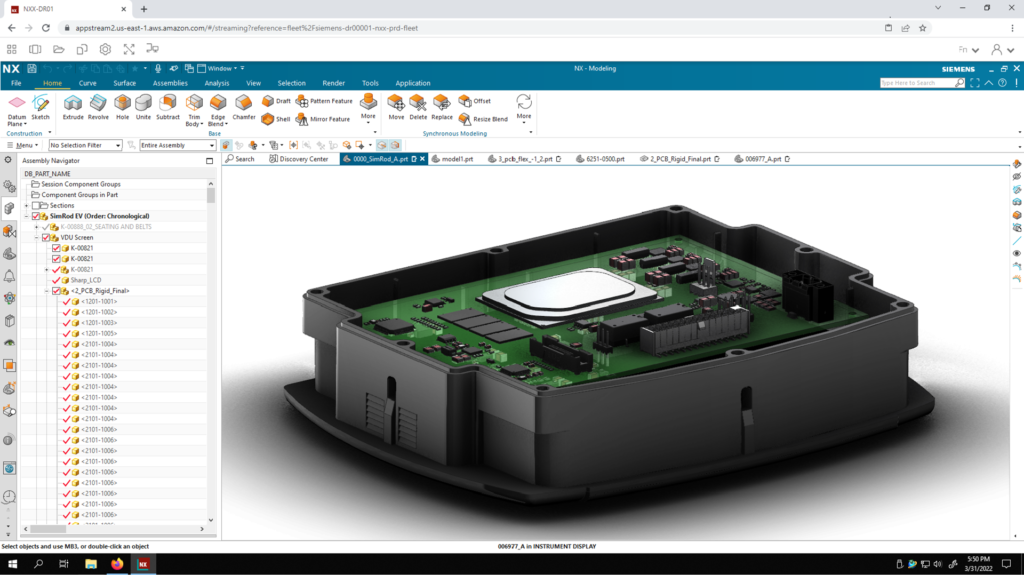Explained: The misconceptions around SaaS and cybersecurity

Software as a Service is increasingly becoming the go-to method used by engineering and design teams to collaborate better and produce quicker, more accurate results.
Software as a Service, also known as SaaS, allows users to access software from their internet browser without the need to download and install software, send or receive working files, or tap into a company’s infrastructure. It’s why companies are moving to SaaS to help gain a competitive advantage.
Although SaaS offers exceptionally high levels of cybersecurity, hosting and accessing restricted files that hold intellectual property via the internet still makes many wary of its promise.
However, maintaining security of an on-premises solution tends to give a false sense of security and often comes with a high price tag for businesses regardless of their size. SaaS offers higher security that goes beyond the legacy practices for on-premises software.
Small-to-medium-sized businesses (SMB) are very likely to have a small IT department, if they have one at all. SMBs that use SaaS, therefore, get the benefit of not running or maintaining their own IT infrastructure and leaving that up to their software provider.
For larger companies that may have a sophisticated IT department, SaaS reduces the workload and investment required to manage the IT layer. This allows companies to focus on their mission of developing their products.
For those concerned about the cybersecurity of a SaaS solution, it’s time to address some of its misconceptions.
The misconceptions around SaaS and cybersecurity
Why is it that SaaS data feels less secure? This perception often stems from the users not having physical control over their data. The reality is, security is often better managed for SaaS on the cloud for a variety of reasons.
Do you know how your company is securing data that is on-premises? For instance, most IT departments that host their data on-premises do not always provide the highest level of security. Additionally, on-premises software may not always be kept up-to-date and therefore exposing the company to newly discovered security vulnerabilities. For Siemens SaaS solutions, the data hosting is handled in the cloud by dedicated teams of experts who follow best practices, monitor, and secure the data against ransomware attacks and data breaches.
To expand on ransomware and data breaches, these types of malicious attacks are familiar as they consistently make the news and known for holding hostage vital information and services or capturing sensitive data. In the event of a ransomware attack, the data is locked away until a ransom is paid. If the company is lucky enough to have backups of their data, they can recover. If not, some companies are forced to pay. Data breaches on the other hand is when unauthorized data access occurs. Unfortunately, they are not always detected by IT teams and might unknowingly continue for months or even years. This means a company’s intellectual property may be stolen without the IT department ever realizing it.
On-premises software gives the illusion of more security simply because data is in a physical location which you control. However, the difference between an IT department at a company versus a reliable SaaS provider is the difference between having a security guard protecting your data versus an entire police force.
Finally, it’s important that the SaaS provider follows the modern cloud security standards and recommendations. Siemens goes through a rigorous set of security reviews and requires ISO and SOC compliance with the applications we release.
NX X: An integrated SaaS solution for CAD users

NX X is a pre-packaged SaaS solution, delivering the full set of NX functionality through cloud streaming technology. NX X as part of the Siemens Xcelerator as a Service offering includes cloud hosted infrastructure, management services, and software capabilities packaged as a suite and is available in many regions around the world. Siemens guarantees a high level of cybersecurity, where the solution is tested by experts for security vulnerabilities and is then quickly remediated.
There’s also the continuous monitoring that occurs, including tracking any sort of malicious activities. Access to NX X can come from anywhere — one of the benefits of working with a global team who must operate from a single source of truth — so it’s critical to ensure the right people are accessing the data. With tight controls from within the application, Siemens can block any access that might not be necessary and have whitelists to give users access to only the things they need to do for their job.
NX X is backed up by Siemens industry standard security best practices to make sure the customer data and access to it is secure.
Watch this video and discover how NX X can boost your company’s collaboration abilities by providing an online CAD solution that allows your team to develop a comprehensive digital twin via a streamed service maintained by Siemens.